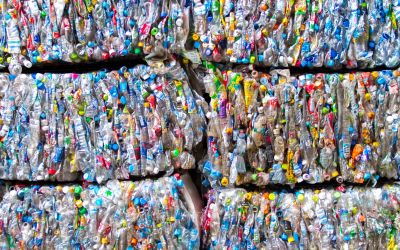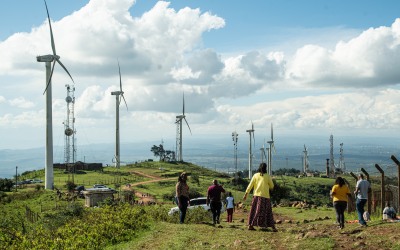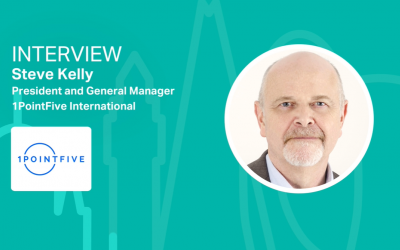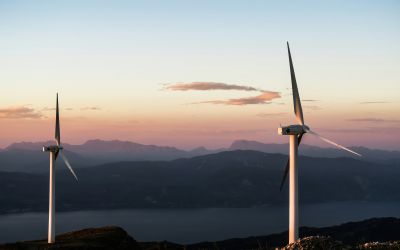William Wilson on how Siemens is working to help accelerate the transition to net zero
Climate Action caught up with William Wilson, CEO at Siemens Mobility Limited, to discuss how Siemens is working to help accelerate the transition to net zero.

Climate Action caught up with William Wilson, CEO at Siemens Mobility Limited, to discuss how Siemens is working to help accelerate the transition to net zero.
How is Siemens working to help accelerate the transition to net zero?
That’s a pretty straightforward answer: reducing the impact that transport has on carbon emissions and decarbonising what is recognised to be the largest emitting sector. Of course, answering is one thing, changing behaviours and making it reality is quite another.
From a practical perspective this means helping people move from their cars and onto public transport and making that first to the last mile easier and more accessible. It also needs to be cheap. It’s not only public purses that are tight, bills are increasing across the board.
Equally we need to make the railway as carbon efficient as it can be. At Siemens Mobility we took the decision to cease production of diesel trains some years ago and we’re now looking at how we can introduce hydrogen/electric/battery bi-mode trains to support full electrification.
It’s about looking at the railway as a whole system - including trains track and signalling - and using the latest innovations. It doesn’t need to be cost-prohibitive. There are clever bits of kit that minimise the need for expensive, time-consuming construction projects. And we can use greener materials and reduce the embedded carbon in our works. But we can’t wait, it has to be central to everything we do.
What are the biggest challenges when it comes to decarbonising transport?
I think it’s fair to say that we all know that climate change and decarbonisation are topics that aren’t going away. The fact that COP26 was so well attended and reported highlighted the world’s focus. But if we’re really going to get people out of their cars and onto public transport to clean up the air we breathe then we’ve all got to make lowering emissions part of our DNA.
I think one of the greatest challenges we face is that of convenience. We’re so used to being able to do what we want when we want. It’s easy for people to jump into their car – and of course that could also be diesel-powered. If there isn’t a simple option to take public transport and book your end-to-end journey in one place, and if it’s not cheap enough, then what’s the incentive to change? And if we don’t have the infrastructure to support electric vehicle (EV) charging on the go then why would people buy EVs? The same applies not only to domestic traffic but road freight too. HGVs are massive emitters. We need to move goods transport to rail where possible and where it’s not introduce other options, such as eHighways or ‘electric roads’.
How has transport changed over the past 10 years? How do you anticipate it will change in the future?
I guess if we’re honest the biggest disruptor to transport has been digitalisation. Our trains can now provide up to the minute data and that can not only be used by operators to plan services and changes but the trains can schedule themselves for maintenance. The railways themselves have also seen the introduction of digital signalling, making things more efficient and allowing more trains to run more safely than ever before, increasing the overall capacity. In addition, things that seemed more science fiction in the past are now becoming fact – who’d have thought cars would park and drive themselves?
The pace of technological innovation continues to speed up. Nearly everyone now has a smartphone and with that immediate access to information comes even greater expectations. That’s not only a technological but also a societal and cultural change. What began as exploration into hailing alternatives to the black cab has morphed into car sharing and pooling, meal deliveries, electric bikes and scooters and autonomous vehicles. That willingness to try new options is something we need to tap into for the future. And radical inventions powered by renewable and sustainable energy sources will become commonplace to address both pollution and congestion.
What role does Hydrogen play in Siemens’ decarbonisation plan? How can we achieve greater H2 uptake?
The next step in the global energy transition will be based on the hydrogen economy. And, as an alternative source of fuel, it has huge benefits. Industrial grade, low maintenance, zero emissions and very efficient.
Make no mistake, we need to change. And we need to consider alternative tractions solutions. And that’s not about suggesting diesel bi-modes. We have huge challenges if we’re to achieve Net Zero targets. And actually it goes further than that. We have a responsibility to our planet – things just aren’t sustainable as they are.
So now it’s about investing in and upscaling hydrogen infrastructure and production. But we’re talking clean, green hydrogen here and that’s where renewable energy comes in. It’s playing an increasingly important role worldwide. Effectively we’re saying hydrogen isn’t the fuel of tomorrow, it’s the fuel of today. There’s an education process here. Governments around the world need to consider how they can ramp up their activities and bring their infrastructure investment projects forwards. And they need to look to the private sector to help fund that investment and share the risk. In a post-COVID world public finances are constrained; alternative funding models could get things going much quicker and let’s face it we don’t have time on our side.
What goals and strategies has Siemens implemented to try and decarbonise your internal operations?
Siemens has already been ranked the most sustainable company in its industry group in the Dow Jones Sustainability Index. The company also secured a top global position in the areas of social and environmental reporting, innovation, and cybersecurity as well as in product and industry-related environmental protection.
But this doesn’t mean we are complacent. Sustainability is an imperative and part of the company strategy – transforming the everyday to create a better tomorrow. Our environmental commitments are firm, detailed, measurable and stand for continued efforts in the areas of decarbonisation, conservation of resources, circular economy and responsible product design. And they relate to the entire value chain.
In 2015 we announced a commitment to carbon neutrality by 2030. Since then we’ve more than halved our own CO2 footprint with regards our own operations so we’re well on the way to reaching our goal. For us it’s a case of walking the walk as well as talking the talk!






